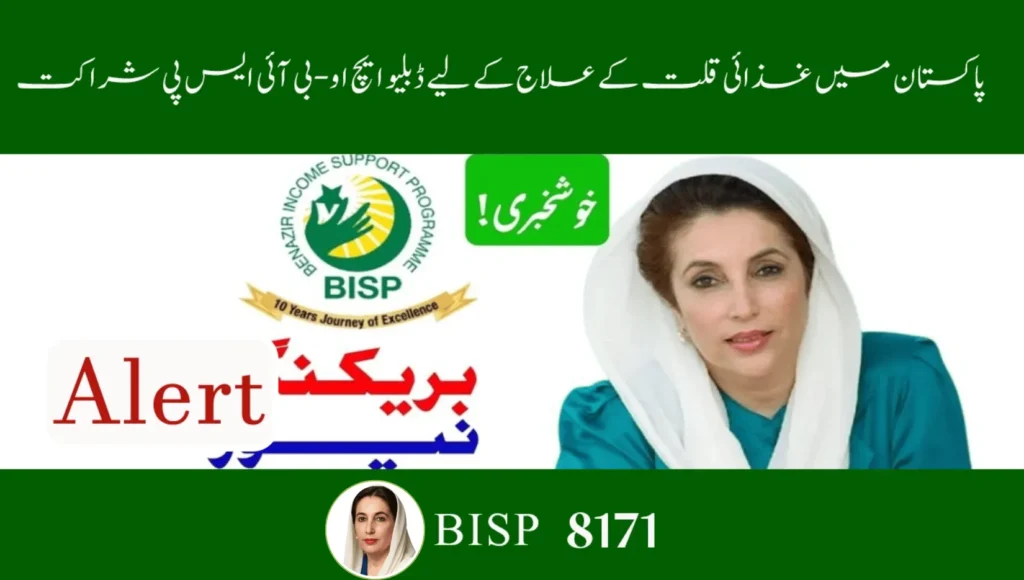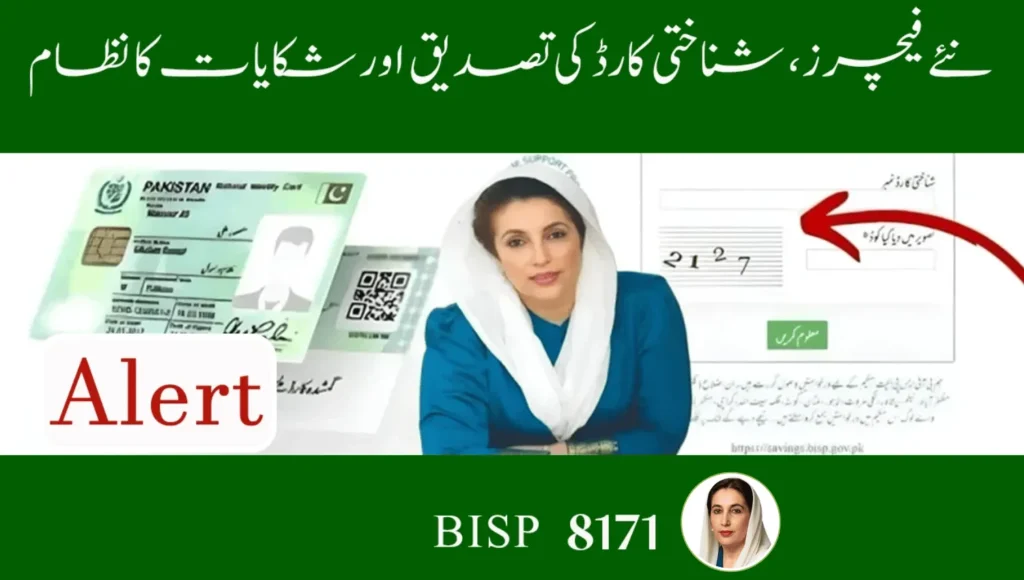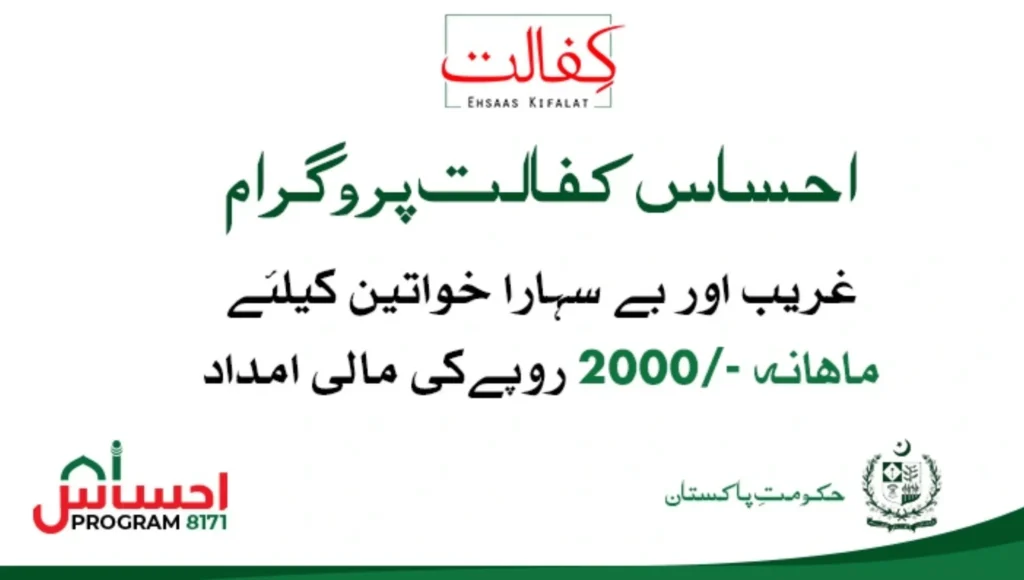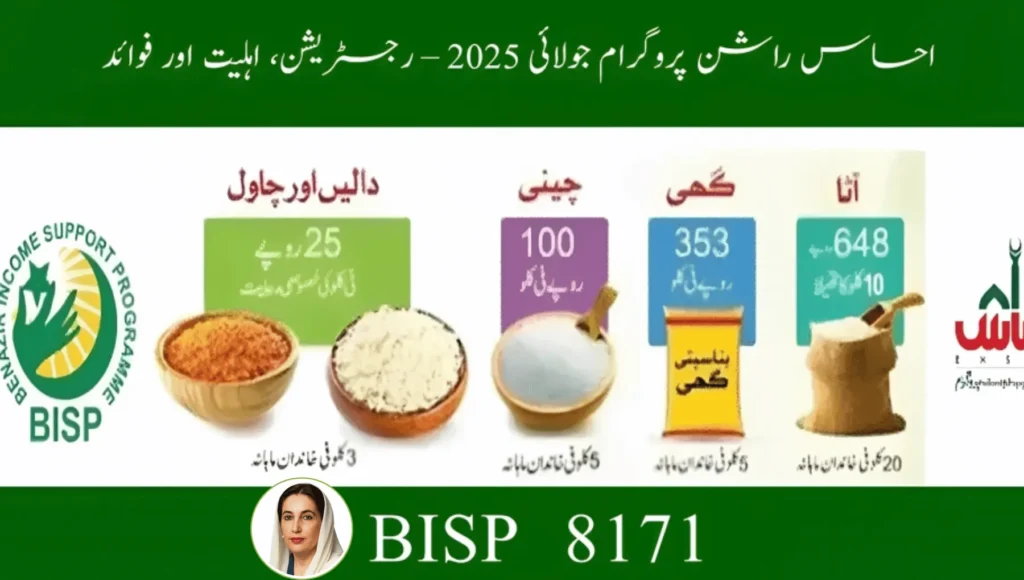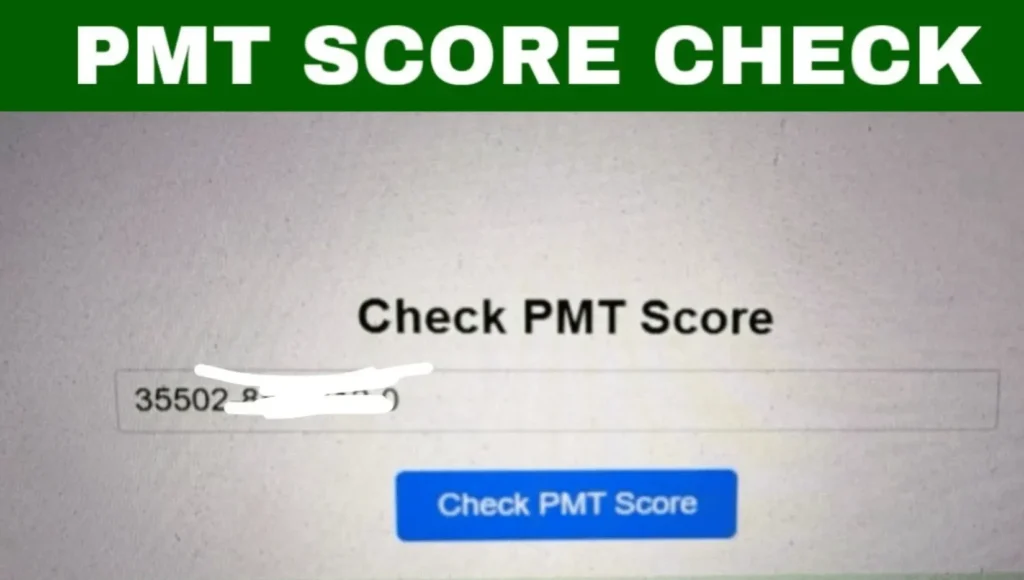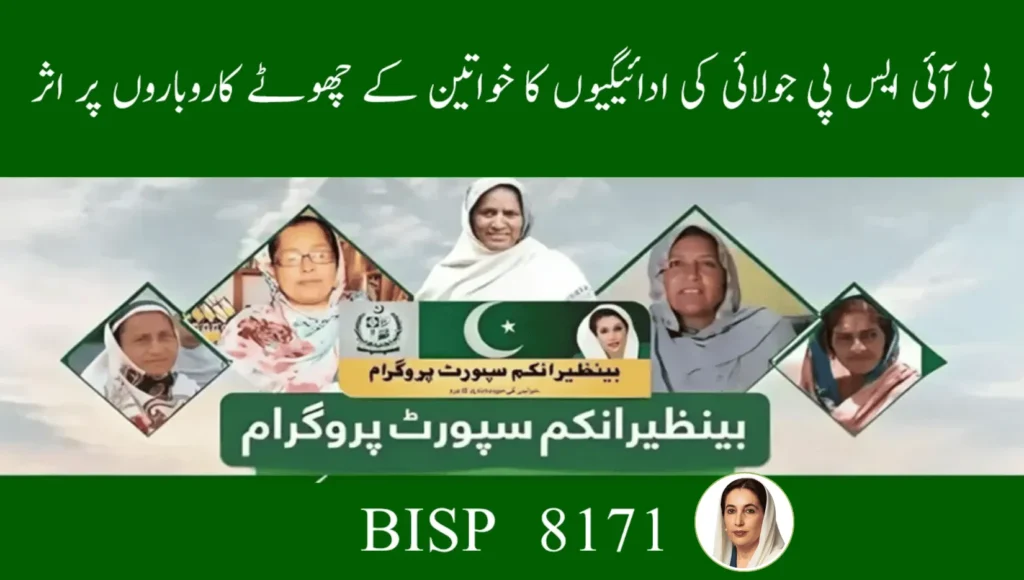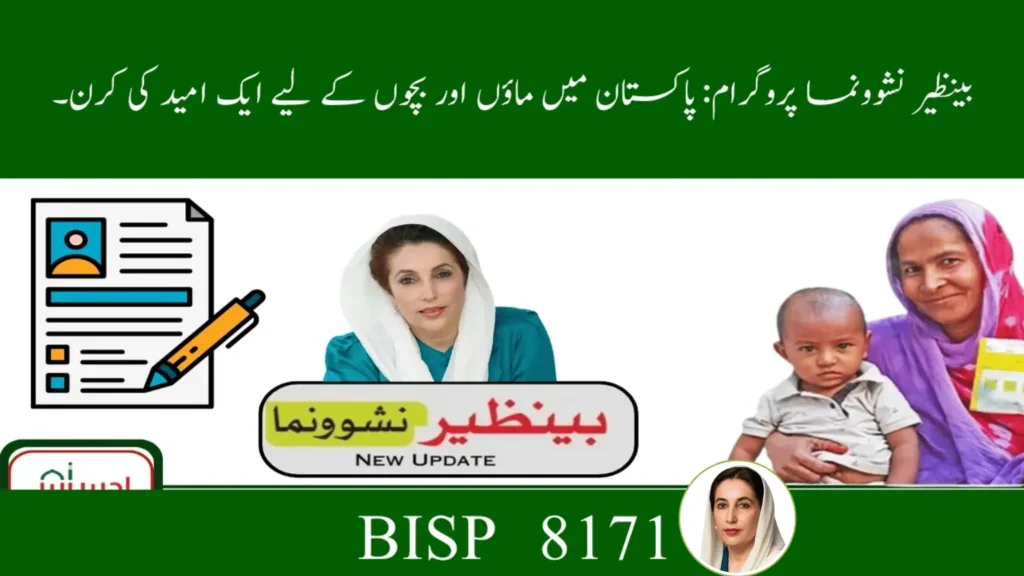WHO-BISP Partnership on Child Nutrition | Malnutrition Treatment in Pakistan July 2025
In Pakistan, nearly 4 in 10 children under five suffer from stunted growth, placing the country in a major nutrition crisis. To combat this, the World Health Organization (WHO) and the Benazir Income Support Programme (BISP) have launched a nationwide partnership under the Benazir Nashonuma Programme, focused on diagnosing, treating, and preventing Severe Acute Malnutrition (SAM) in children.
This initiative empowers families through free treatment, nutritional care, and maternal education laying the groundwork for long-term health and development across vulnerable communities.
WHO-BISP Child Nutrition Initiative 2025
Complete Guide – Benazir Nashonuma Programme, Nutrition Stabilization Centres, and Family Support
🏥 What Is the WHO-BISP Child Nutrition Initiative?
The WHO-BISP collaboration is a core component of the Benazir Nashonuma Programme, designed to support:
| Target Group | Description | Support Level |
|---|---|---|
| Malnourished Children | Malnourished children under 2 years | Priority Care |
| Pregnant Women | Pregnant and lactating women from low-income families | Essential Support |
| Service Offered | Description | Availability |
|---|---|---|
| Free Diagnosis and Treatment | Free diagnosis and treatment of SAM (Severe Acute Malnutrition) | Completely Free |
| Nutritional Supplements | Nutritional supplements and therapeutic feeding | Available 24/7 |
| Caregiver Education | Caregiver education on hygiene, feeding, and health | Ongoing Support |
| Counselling Services | Counselling services and follow-up care | Continuous Care |
🎯 Objective: To reduce malnutrition, prevent stunting, and improve maternal-child health across Pakistan.
📊 Impact So Far (As of July 2025)
The partnership has already delivered life-changing results:
| Achievement | Numbers | Status |
|---|---|---|
| Children Treated Annually | 43,000+ children under 2 treated each year | ✅ Achieved |
| NSCs Established | 169 NSCs established nationwide | ✅ Operational |
| Recovery Rate | 98% recovery rate, well above the global average of 75% | ✅ Exceptional |
| Mothers Educated | 64,000+ mothers educated on child nutrition and hygiene | ✅ Empowered |
| Future Plans | Target | Timeline |
|---|---|---|
| NSC Expansion | Expansion to 199 NSCs by end of 2025 | 🔜 Coming Soon |
| Children Target | Reach 80,000 children | 🎯 2025 Goal |
| Caregivers Target | Support 120,000 caregivers | 🎯 2025 Goal |
🏬 What Are Nutrition Stabilization Centres (NSCs)?
NSCs are specialized medical units located within:
| Location Type | Description | Accessibility |
|---|---|---|
| Major Public Hospitals | Located within major public hospitals | Widely Available |
| District-Level Health Facilities | Integrated with district-level health facilities | Local Access |
| Service Offered | Description | Availability |
|---|---|---|
| 24/7 Inpatient Care | 24/7 inpatient care for severely undernourished children | Round-the-Clock |
| Weight Monitoring | Regular weight monitoring and recovery tracking | Continuous |
| Counselling Support | Counselling and follow-up support for caregivers | Ongoing |
💡 Integration: Many NSCs are integrated with WHO, UNICEF, and WFP for smooth referral and coordinated care.
🤝 Benazir Nashonuma: The Bigger Health Framework
The WHO-BISP initiative is part of the larger Benazir Nashonuma Programme, which has received major funding boosts to scale in 2025.
| Funding Details | Amount | Purpose |
|---|---|---|
| July 2025 Expansion | $6.3 million expansion agreement | WHO-BISP Partnership |
| Programme Component | Description | Focus Area |
|---|---|---|
| Micronutrient Supplements | Provision of essential micronutrient supplements | Nutritional Support |
| Exclusive Breastfeeding Promotion | Promoting exclusive breastfeeding practices | Maternal Health |
| Maternal Counselling | Comprehensive maternal counselling services | Support Services |
| Digital Health Tracking | Digital health tracking and monitoring systems | Technology Integration |
🎯 Prevention Focus: This expansion is focused not just on curing existing malnutrition—but preventing it before it begins.
📉 Why This Programme Matters for Pakistan
| National Challenge | Statistics | Impact Level |
|---|---|---|
| Children at Risk | 15+ million children are at risk of stunting or wasting | 🧒 Critical Issue |
| Economic Cost | Malnutrition costs the country over $17 billion annually | 🇵🇰 National Impact |
| Lifelong Impact | Poor nutrition leads to lifelong cognitive and physical damage | 🧠 Permanent Effects |
🔄 Breaking the Cycle: This isn’t just a health program—it’s a social safety net that breaks the cycle of poverty, hunger, and disease.
🗣️ What Experts Say
| Expert | Position | Statement |
|---|---|---|
| Dr. Palitha Mahipala | WHO Representative | “This is our duty to protect our most vulnerable. With this initiative, we’re saving lives and securing Pakistan’s future.” |
| Dr. Muhammad Amjad Saqib | Chairman BISP | “Thanks to WHO, UNICEF, and WFP, BISP is addressing both poverty and malnutrition head-on—where it begins: in early childhood.” |
📋 How Families Can Get Help
If your child is under 2 years old and shows signs of severe weight loss or weakness, follow these steps:
| Step | Action Required | What to Bring |
|---|---|---|
|
1
|
Visit Nearest Facility Visit your nearest district hospital or NSC |
Go to the nearest location |
|
2
|
Bring Required Documents Carry necessary documents |
Required documents listed below |
|
3
|
Ask for Nashonuma Unit Ask for the Nashonuma Unit or Nutrition Desk |
Request specific department |
| Required Documents | Document Type | Status |
|---|---|---|
| Mother’s CNIC | Mother’s valid CNIC | Must Have |
| Child’s B-Form | Child’s NADRA B-Form | Must Have |
| Service Process | What Healthcare Worker Will Do | Service Type |
|---|---|---|
| Diagnosis | Complete medical diagnosis of the child | Free Service |
| Treatment | Provide appropriate treatment plan | Free Service |
| Nutrition Therapy | Start nutrition therapy program | Free Service |
| Follow-up Sessions | Enrolment in follow-up sessions | Free Service |
📌 Important: All services are free of cost—no fee is required.
❓ Frequently Asked Questions (FAQs)
| Question | Answer |
|---|---|
| What’s the age limit? | Children under 2 years (24 months) are eligible. |
| Is the treatment really free? | Yes. All services are fully funded by WHO and BISP. |
| Where can I find my nearest NSC? | Call your local BISP Tehsil Office, or check the official portal for updates. |
| What if my child recovers—do services stop? | No. You’ll receive a personalized follow-up plan and may be referred to nearby outreach health units. |
| Eligibility Criteria | Details | Status |
|---|---|---|
| Age Requirement | Children under 2 years (24 months) | Eligible |
| Cost | All services completely free | No Cost |
| Follow-up Care | Personalized follow-up plan provided | Continuous Support |
💡 Important Health Guidelines
WHO-BISP بچوں کی غذائیت کا پروگرام 2 سال سے کم عمر کے بچوں اور حاملہ خواتین کے لیے مفت علاج فراہم کرتا ہے۔ اگر آپ کا بچہ کمزور ہے یا اس کا وزن کم ہے تو فوری طور پر قریبی ضلعی ہسپتال یا NSC جائیں۔ اپنا شناختی کارڈ اور بچے کا B-Form لے کر جائیں۔ تمام خدمات مکمل طور پر مفت ہیں اور کوئی فیس نہیں لگتی۔
🛡️ Final Thoughts: A Lifeline for the Future
The WHO-BISP Nutrition Partnership is more than a treatment plan—it’s a commitment to the next generation of Pakistan.
| Programme Achievement | Impact | Success Level |
|---|---|---|
| Record Recovery Rates | 98% recovery rate achieved | Exceptional Success |
| Thousands of Mothers Empowered | 64,000+ mothers educated and empowered | Community Impact |
| Hundreds of Centers | 169 NSCs operational nationwide | Wide Coverage |
| Call to Action | What to Do | Urgency Level |
|---|---|---|
| Early Action | If your child shows signs of malnutrition, act early | Immediate Action |
| Visit NSC | Visit the nearest Nutrition Stabilization Centre today | Help Available |
| Community Support | Help someone you know who might need this service | Community Care |
🌟 Mission: Because no child in Pakistan should suffer silently from hunger or poor health. This initiative stands as a model of how health and social support can work together.

